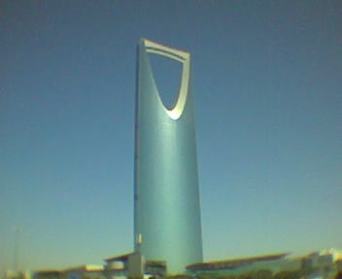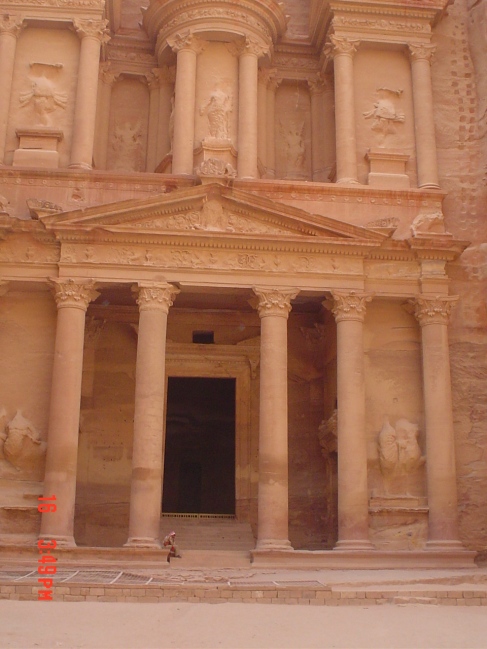
Ben Gurion Airport in Tel Aviv, Israel
Eagle’s Flight – On Ground Turbulence and coping strategies
So with an India base and an office routine back in Mumbai you are in the Monday to Friday mode along with your back end team that supports you in the selling process. Whereas Middle East customers and prospects follow the Sunday to Thursday work week and countries like Saudi and Oman follow the Saturday to Wednesday workweek. This means that my typical 10 day trip from Mumbai would start on a Friday evening!!! 😦
Another disadvantage of working with an India base.
Time differences vary across the region too. UAE and Oman are 1.5 hours behind India – not too bad. Kuwait, Saudi, Bahrain and Qatar are 2.5 hours behind – again pretty tolerable. Egypt, Jordan etc are in the 3.5 hour range and they have an adjustment during winter. Nigeria is much closer to GMT. Overall time difference with India for the MEA region is never more than 4.5 hours. So in that sense jet lag is not as bad as travelling to say the US or South America.
Immigration and therefore visa is a huge task in itself for Indian passport holders; I envy my UK / USA passport holder friends in this aspect. I had secured a 3 year UAE work visa even though I was not permanently based there. This document enabled me to travel without having to take a visa in advance to all GCC countries except Saudi Arabia. Someone I know joked about Saudi Arabia saying that the Saudis are very fair – they make it equally difficult for every nationality to travel into Saudi Arabia. 🙂
Besides this UAE offers the e-gate card using which you can be through immigration in a matter of minutes and there is no stamp on your passport too – saves precious passport pages which are gold for the prolific business traveller.
Many of the African countries give Indians visa on arrival – Kenya, Tanzania, Uganda etc. South Africa gives you a one year multiple entry visa if you make the request at the time of applying and the Mumbai consulate is very friendly. The Nigerian visa can be a bit more difficult and expensive too. Did you know that Indians can get a visa on arrival at Jordan? But it’s best to take a visa in advance because the visa on arrival process is long at Queen Alia Airport, Amman – I have experienced it when I travelled there once with my wife. Likewise Iran also grants Indians a tourist visa on arrival but given the unpredictable nature of the Immigration there most visitors take a visa in advance. If you have a UAE residence visa it’s also possible to apply for many of these visas at the respective consulates in Dubai / Abu Dhabi – can be more convenient and quicker at many times. The more difficult visas are to Tunisia, Morocco and Algeria for us Indians. Lebanon unfortunately also counts amongst the difficult category.
One of the more difficult places to visit is Palestine for which you need to take an Israeli visa. The problem with having an Israeli visa stamped on your passport is that, you could have trouble with the immigration in the GCC countries (Saudi, UAE, Qatar, Kuwait, Oman and Bahrain). Previously the Israeli officials were flexible and would staple a visa page to your passport duly stamped for the duration of your visit. You could later remove it once the trip was over and there was no worry about an Israeli visa stamp on the main pages of one’s passport. They stopped doing this some seven years ago. Wondering how to get around this situation I met with the Indian consulate in Dubai who suggested that I might want to apply for a fresh passport that was valid only for travel to Israel. I did and got one within a week and the travel took place without a glitch. So for a period of one year till it expired I had two valid Indian passports – one for travel all over the world (except Israel) and one for travel only to Israel !!!
While waiting at airports it’s important to have lounge access. Credit cards come in extremely handy at such times. Platinum, Titanium, Gold versions of Master, Visa, Diners and Amex can be extremely useful and can allow you free access to lounges. The Marhaba Lounge at Dubai, Dilmun at Bahrain, Plaza Lounge at Muscat, the Pearl Lounge in Kuwait or the Premier Lounge at Johannesburg all give you free access with one or the other credit card. Of course if you can invest into an unlimited package of the Priority Pass card ($ 349 per annum) then nothing like it because it’s accepted almost everywhere. A lounge gives you a clean toilet, some quiet space, food and drink and above all free WiFi access – gold for a business traveller. And in any case the lounge is where you will likely run into a key customer or partner contact that is also flying. So do make it a point to invest in some or all these cards.
The best place to convert US Dollars to cash is at the airport if you happen to be carrying cash or traveller’s cheques. Over time most companies have moved to a cash / credit card. Again a good idea is to take the local currency from an airport ATM before you head into the city. While Middle East countries are OK and you will find ATMs at malls and gas stations, in Africa it could be a challenge. It’s best in Africa to take the money at the airport and discreetly put it away into your purse / pouch / bag.
The airport hustle is something that you don’t need to worry about much in the Middle East – things are professional and clean. It’s in Africa that this rears its head. So for example at the OR Tambo International airport in Johannesburg as I was walking out 2 cops accosted me and wanted to know what was in my bag. Basically they were threatening to delay and harass me and the price for avoiding that was some money. Since I was not aware of the going rate I handed in a Rand 50 bill and walked on. Later on someone mentioned that R 20 would have worked quite nicely.
At the Murtala Muhammed Airport in Lagos, Nigeria you have to be careful that you don’t make any sort of eye contact with any official because the minute s/he catches your eye s/he will stroll over and hustle you for a tip. At every stage they can demand a tip – while getting into the airport, at the check in counter, at the visa counter, at the security…… everywhere! Best to keep some Nairas with you till you get into the Duty Free zone and even then you aren’t totally free. There is another baggage screening just before you board the plane. I realized how Dr.Nicholas Garrigan would have felt as he sat in the plane with the non Israeli passengers at Kampala airport before it eventually took off during the regime of Idi Amin. 🙂
At the Kenyatta airport in Nairobi I have been advised to keep the exact change handy for paying the visa charges, else the balance will be taken away as a tip. 🙂
Once at the Khartoum International Airport at the time of departure, I was asked to place my bags on a conveyor outside the airport and the bags disappeared somewhere into the airport. Thereafter it was a big job to fight my way into the airport through the milling crowds. Once in I rushed anxiously looking for my bags, by which time one of the touts had taken possession of them and “offered” me his services to facilitate a check in!!! So make it a point to securely lock even your hand bags – you never know what you will encounter. I didn’t lose anything that time but anything could have happened.
In the Middle East it’s fairly safe to take a taxi from the airport and head into the city. Things are well regulated and cheating is rare. Dubai is the best and Saudi the worst with the others falling in the middle. But even then it’s much safer than Africa where you need to plan in advance and take care. Of course of late I have heard horror stories about Saudi Arabia too. Purse / Bag / Mobile snatching are not uncommon on even a busy and upmarket Olaya Road in Riyadh.
For travelling into the city its best to have the hotel arrange a pick up or request your local contact / partner to arrange a pick up when travelling to Africa. Feels a lot safer and in control!
Much more experiences to share in subsequent posts. Keep reading.
Tags: Africa, Bahrain, Dilmun, Dubai, Immigration, Israel, IT, Johannesburg, Khartoum, Marhaba, MEA, Muscat, OR Tambo, Palestine, Pearl, Plaza, Queen, sales, Saudi, Telecom




